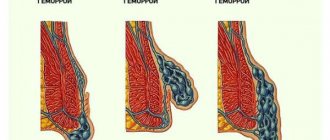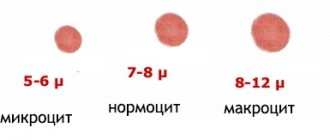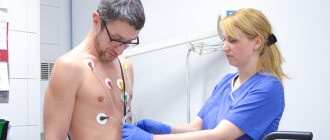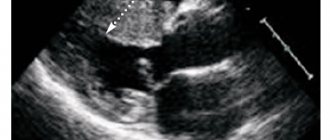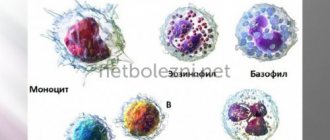This is the second article in a series about a healthy heart, author - Ksenia Benimetskaya, cardiologist, nutritionist, Ph.D. This time we’ll tell you how different types of activity affect the heart, how much and how to train so as not to overdo it.
Regular moderate physical activity maintains and improves heart health. This is exactly the same as in the #sekta courses
What are the benefits of physical activity for the heart?
Physical activity maintains and improves health: has a positive effect on cognitive function, sleep, reduces the risk of depression and anxiety, helps maintain a normal weight and improves quality of life. And, most importantly, it improves heart function and prolongs life: as we wrote in the article “How Diet Impacts Heart Health,” cardiovascular disease (CVD) is one of the leading causes of death in the world.
How exactly movement helps the cardiovascular system:
- Prevents the development of atherosclerosis: by reducing body weight, blood pressure and cholesterol levels in the blood are normalized, insulin sensitivity is improved and the risk of developing type 2 diabetes is reduced.
- Prevents thrombosis.
- Improves the function of the endothelium lining blood vessels - the synthesis of nitric oxide and its bioavailability increases, the balance of oxidants and antioxidants in the vascular wall improves. Nitric oxide, an important molecule for the cardiovascular system, is responsible for the tone of the vascular wall, prevents platelet activation, and prevents leukocytes from sticking to the inner surface of blood vessels.
- It has anti-inflammatory, anti-ischemic and antiarrhythmic effects.
At the cellular level, regular exercise helps optimize energy use and increases resistance to oxidative stress.
It is thanks to these effects that those who move enough are less likely to suffer from heart attacks and strokes, arterial hypertension, less likely to die from cardiovascular diseases, live longer and have a higher quality of life.
Unfortunately, only 19% of women and 26% of men move enough. A sedentary lifestyle is widespread: one in four people in the world exercise less than they should, and this figure is growing.
Valves and outlet paths[edit]
Formation of the trunk septum and arterial cone[edit]
The arterial cone is closed by infundibular cushions. The cones of the barrel are closed by forming a funnel-shaped septum, which consists of a straight proximal part and a distal spiral part. Then the narrowest part of the aorta is in the left and dorsal part. The distal aorta moves forward to the right. The proximal pulmonary artery is right and ventral, and the distal pulmonary artery is in the left dorsal part. [eleven]
Different types of physical activity and their effect on the heart
To achieve the positive effects of movement, it is necessary to follow at least the minimum recommendations for physical activity.
But when you read the recommendations, keep in mind: “physical activity” and “workout” are not the same thing. Let’s figure out how the concepts differ and how this will help us meet the load standards.
Physical activity is body movement caused by skeletal muscle contraction that increases energy expenditure above baseline levels. This is any physical activity: professional, household, for the purpose of movement, active recreation. In addition, any physical activity can be of varying intensity.
Exercise is planned, structured, repetitive and purposeful physical activity to maintain or improve physical fitness.
And physical activity is the effect that various physical activities have on the human body.
When you exercise, you are engaging in physical activity. But you can also be active outside of training, when you are walking somewhere, carrying bags from the store, walking down the stairs, or simply getting up from a chair.
The main types of physical activity are cardio and strength training, and there are also training sessions for balance, flexibility, coordination, stretching and many others.
Cardio load
During cardio training, the heart rate increases and aerobic activity predominates. If this happens regularly, the heart and blood vessels adapt to physical activity - as a result, the entire cardiovascular system is trained.
Thanks to aerobic activity:
- heart rate and blood pressure decrease at rest and during physical activity;
- the need of the heart muscle for oxygen decreases;
- the contractility of the heart muscle increases;
- peripheral venous tone increases;
- favorable changes occur in the fibrinolytic system, which fights blood clots;
- due to increased synthesis of nitric oxide, better blood supply to tissues occurs due to the expansion of the diameter of blood vessels;
- parasympathetic tone increases, which reduces the impact of stress on the body at the neurophysiological level, heart rate and blood pressure decrease;
- coronary blood flow improves due to the development of collateral vessels - additional “connections” between the arteries of the heart.
Aerobic physical activity recommendations for adults: at least 150–300 minutes per week of moderate-intensity activity or at least 75–150 minutes of vigorous-intensity activity. Activities of different intensity can be combined. Read more in our article “Recommendations for physical activity.”
Power load
Strength training helps strengthen muscles: this can occur as a result of dynamic work, such as in weightlifting, or static work, such as in gymnastics and yoga. Strength exercises can be performed using sports equipment, machines and your own weight.
Strength training improves your psycho-emotional state, sleep, cognitive abilities, and helps cope with depression. They also improve body composition, increase muscle mass and reduce the amount of fat, including visceral fat.
Excess visceral fat is a risk factor for the development of metabolic syndrome, diabetes, chronic systemic inflammation, and, as a result, heart disease.
Strength training increases the body's anaerobic capacity, but can also work on aerobic capacity and improve endurance, especially in untrained people.
For those who have not exercised for a long time or have never exercised or are recovering from an illness, it is recommended that you begin your training program with simple strength exercises to develop the minimum strength necessary for subsequent work.
It is recommended for all adults to add an aerobic component to any strength training program: scientific evidence indicates that strength training combined with aerobic physical activity provides greater health benefits than either activity alone. Strength training for large muscle groups should be done at least twice a week.
Other activities
Other types of activity are also good for the heart. For example, yoga, which includes asanas, breathwork, relaxation and meditation.
This activity is beneficial because it helps relieve psychosocial stress (related to work or family), calm you down, and reduce the risks of depression and anxiety disorders by activating the parasympathetic nervous system. And all of these conditions are associated with an increased risk of cardiovascular disease.
Research shows that yoga has a positive effect on cardiometabolic health: it helps control weight, blood pressure, and lipid levels. Yoga helps to better control atrial fibrillation, heart failure and other diseases.
In addition, yoga, stretching, Pilates and other similar activities can encourage healthy habits that have a positive impact on cardiovascular health.
Different types of yoga emphasize different components of activity and can be classified as low to moderate (rarely high) intensity physical activity.
Tai chi, a martial art - and now a form of health activity - combines an aerobic component with relaxation. That’s why it is also called “meditation in motion.” A new study has found that for people with heart problems, tai chi improves quality of life and reduces stress, anxiety and depression.
Yoga and tai chi develop flexibility and balance. They do not directly affect heart health, but they do benefit musculoskeletal health because they prevent muscle and joint pain and help maintain mobility.
Good musculoskeletal health allows you to perform aerobic and strength exercises, the benefits of which are obvious for the heart. It is important that developing flexibility, stretching and balance prevents falls and injuries during exercise and everyday activities.
Early development[edit]
The heart is derived from embryonic cells of the mesodermal germ layer, which differentiate into mesothelium, endothelium and myocardium after gastrulation. The mesothelial pericardium forms the outer lining of the heart. The inner lining of the heart - endocardium, lymphatic and blood vessels - develop from the endothelium. [5] [2]
Endocardial tubes[edit]
In the splanchnopleuric mesenchyme on either side of the neural plate, the horseshoe-shaped region develops as a cardiogenic region. It was formed from cardiac myoblasts and blood islands as precursors of blood cells and blood vessels. [6] By day 19, an endocardial tube begins to develop on each side of this area. These two tubes grow and by the third week they come together to fuse using programmed cell death to form a single tube, the tubular heart. [7]
From the splanchnopleuric mesenchyme, the cardiogenic region develops cranial and lateral to the neural plate. In this area, two distinct clusters of angiogenic cells form on either side and fuse to form endocardial tubes. As the embryo continues to fold, the two endocardial tubes are pushed into the chest cavity where they begin to fuse together, which is completed after approximately 22 days. [8] [2]
Approximately 18-19 days after fertilization, the heart begins to form. This early development is critical for subsequent embryonic and prenatal development. The heart is the first functional organ to develop and begins beating and pumping blood around day 22. [1] The heart begins to develop near the head of the embryo in the cardiogenic region. [1] Following cell signaling, two threads or cords begin to form in the cardiogenic region. [1] As they form, a lumen develops inside them, after which they are called endocardial tubes. [1] At the same time as the tubes form, other major components of the heart also form. [7]The two tubes migrate together and fuse to form a single primitive heart tube, a tubular heart that quickly forms five separate regions. [1] From head to tail, these are the truncus arteriosus, the medullary bulb, the primitive ventricle, the primitive atrium, and the sinus venosus. [1] Initially, all venous blood flows into the sinus venosus, and contractions propel the blood from the tail to the head or from the sinus venosus to the truncus arteriosus. [1]The truncus arteriosus will divide to form the aorta and pulmonary artery; the bulbus cordis will develop into the right ventricle; the primitive ventricle forms the left ventricle; the primitive atrium will become the anterior parts of the left and right atria and their appendages, and the sinus venosus will develop into the posterior part of the right atrium, the sinoatrial node and the coronary sinus. [1]
Position of the heart tube[edit]
The central part of the cardiogenic region is located in front of the oropharyngeal membrane and the neural plate. The growth of the brain and cephalic folds pushes the oropharyngeal membrane forward, while the heart and pericardial cavity move first into the cervical region and then into the chest. The curved portion of the horseshoe-shaped area expands to form the future ventricular infundibulum and ventricular regions as the heart tube continues to expand. The tube begins to receive venous drainage at its caudal pole and pumps blood from the first aortic arch to the dorsal aorta through its polar head. Initially, the tube remains attached to the dorsal portion of the pericardial cavity by a fold of mesodermal tissue called the dorsal mesoderm. transverse pericardial sinuses
and
the oblique
pericardial sinuses, which connect both sides of the pericardial cavity. [6]
The myocardium thickens and secretes a thick layer of rich extracellular matrix containing hyaluronic acid, which separates the endothelium. The mesothelial cells then form the pericardium and migrate to form the majority of the epicardium. The heart tube is then formed by the endocardium, which is the inner endothelial lining of the heart, and the myocardial muscle wall, which is the epicardium, which covers the outer part of the tube. [6]
Excessive exercise is not good for heart health
Official guidelines do not specify an upper limit for healthy physical activity. However, they do warn about the risks of injury and health problems from overindulging in high-intensity training.
Long-term endurance exercise is associated with an increased risk of anxiety disorders and depression, adverse changes in the structure of the heart and arteries, which can lead to consequences including serious arrhythmias.
Chronic training and competition in extreme sports can cause negative cardiovascular effects. We are talking about marathons, ultramarathons, Ironman triathlon, long-distance cycling races, etc.
Other studies on excessive exercise:
- A study of patients who had suffered a myocardial infarction looked at how intensity and duration of exercise affected health for more than a decade. Observations have shown that running and walking reduce the risk of mortality from cardiovascular diseases, but the benefits of exercise for the same purposes decrease at high levels of physical activity: running more than 7.1 km/day or brisk walking more than 10.7 km/day.
- Another study of patients with coronary artery disease found that both physically inactive patients and patients with daily vigorous physical activity had an increased risk of death from cardiovascular causes compared with patients with moderate physical activity.
- These observations are confirmed in a study of people without CVD: moderate activity was associated with a lower risk of CVD compared with low activity, and daily vigorous physical activity was associated with an increased risk of CVD.
- The epidemiological study Copenhagen City Heart Study examined the effect of different levels of activity on mortality. The researchers found that jogging at an easy to moderate pace was associated with lower mortality compared with being sedentary and not exercising. At the same time, intense runners had nearly the same mortality rate as sedentary people.
The question of whether there is an upper level of physical activity beyond which it no longer provides health benefits requires further research. It is likely that “excessive” physical activity is determined individually and depends on various factors, including a person’s age, health, and lifestyle.
Available evidence suggests the benefits of moderate physical activity compared with sedentary lifestyles and excessive activity. In any case, do not forget that rest is an important part of the training process; it helps the body recover before the next workout.
Symptoms of excessive exercise, or overtraining:
- inability to work and train at the same level while maintaining the same conditions;
- the need for longer rest;
- frequent fatigue;
- mood swings, irritability, anxiety, depression;
- sleep problems;
- muscle pain, heaviness in the arms and legs;
- frequent injuries during training;
- loss of motivation;
- frequent ARVI;
- weight loss.
If you exercise a lot and have any of these symptoms, reduce the amount of physical activity or take a break from it completely for 1-2 weeks. Often this is all that is required for recovery. If after 1–2 weeks of rest you do not feel better, consult a doctor: you may need a longer rest.
Content
- 1 Early development 1.1 Endocardial tubes
- 1.2 Position of the heart tube
- 3.1 Venous sinus
- 4.1 Formation of the truncal septum and conus arteriosus
- 6.1 Heart rate
How to exercise without harming your heart
Consult your doctor before starting to exercise if you have not exercised for a long time or have never exercised. If you have heart disease or risk factors for it, your doctor may recommend an exercise tolerance test.
Start training gradually. For example, do the exercises at a slow pace or only for a few minutes. Over time, you can increase the intensity and duration. Warm up before your workout and cool down after.
Stop exercising and contact your doctor immediately if you experience any of the following symptoms during exercise:
- pain, tightness, heaviness in the chest, arms, throat, jaw, or back;
- nausea or vomiting;
- a feeling of “fluttering” of the heart or a very rapid heartbeat;
- severe dizziness, weakness, fatigue;
- inability to catch your breath;
- pain in the joints, legs, heels or calf muscles (this is not an emergency, but it is also better to consult a doctor about it).
So that the training does not harm:
|
Use household activities if you find it difficult to find time for a full workout:
- take the stairs instead of the elevator;
- park further from your destination or get off one stop earlier than yours on public transport;
- take a longer route when going somewhere;
- spend your free time actively, choose outdoor games;
- get a pet that needs to be walked;
- clean the house yourself.
The health of your cardiovascular system and other body systems depends on whether you move enough. There are no pills, supplements, devices or techniques that can take the place of movement, so take every opportunity to move.
Author: Ksenia Benimetskaya, cardiologist, nutritionist, Ph.D.
Literature
1. The Physical Activity Guidelines for Americans, JAMA, 2021 2. Strength training for health in adults: Terminology, principles, benefits, and risks — UpToDate 3. The benefits and risks of aerobic exercise — UpToDate 4. Exercise-induced oxidative stress: cellular mechanisms and impact on muscle force production, Physiol Rev, 2008 5. Worldwide trends in insufficient physical activity from 2001 to 2016: a pooled analysis of 358 population-based surveys with 1·9 million participants, Lancet Glob Health, 2021 6. Recommendations on physical activity, Sekta 7. Resistance training and executive functions: a 12-month randomized controlled trial, Arch Intern Med, 2010 8. Different modalities of exercise to reduce visceral fat mass and cardiovascular risk in metabolic syndrome: the RESOLVE randomized trial, Int J Cardiol, 2013 9. The effect of 12 weeks of aerobic, resistance or combination exercise training on cardiovascular risk factors in the overweight and obese in a randomized trial, BMC Public Health, 2012 10. Is yoga heart-healthy? It's no stretch to see benefits, science suggests, Heart.org, 2021 11. 2021 European Guidelines on cardiovascular disease prevention in clinical practice: The Sixth Joint Task Force of the European Society of Cardiology and Other Societies on Cardiovascular Disease Prevention in Clinical Practice ( constituted by representatives of 10 societies and by invited experts) 12. The effectiveness of yoga in modifying risk factors for cardiovascular disease and metabolic syndrome: A systematic review and meta-analysis of randomized controlled trials, European Journal of Preventive Cardiology, 2014 13. Effects of yoga in patients with paroxysmal atrial fibrillation - a randomized controlled study, European Journal of Cardiovascular Nursing, 2021 14. Yoga for Heart Failure: A Review and Future Research, Int J Yoga, 2021 15. Tai Chi Boosts Heart Health, Cleveland Clinic, 2021 16. Tai Chi exercise for psychological well-being among adults with cardiovascular disease: A systematic review and meta-analysis, European Journal of Cardiovascular Nursing, 2021 17. 3 Kinds of Exercise That Boost Heart Health, Hopkins medicine 18. State of the Art Review: Atrial Fibrillation in Athletes, Heart Lung Circ, 2021 19. Atrial Fibrillation (AF) in Endurance Athletes: a Complicated Affair, Curr Treat Options Cardiovasc Med, 2021 20. Atrial fibrillation in athletes and general population. A systematic review and meta-analysis, Medicine, 2021 21. The “Extreme Exercise Hypothesis”: Recent Findings and Cardiovascular Health Implications, Curr Treat Options Cardiovasc Med, 2021 22. Increased Cardiovascular Disease Mortality Associated With Excessive Exercise in Heart Attack Survivors, Mayo Clinic Proceedings, 2014 23. A reverse J-shaped association of leisure time physical activity with prognosis in patients with stable coronary heart disease: evidence from a large cohort with repeated measurements, Heart, 2014 24. Frequent physical activity may not reduce vascular disease risk as much as moderate activity: large prospective study of women in the United Kingdom, Circulation, 2015 25. Dose of Jogging and Long-Term Mortality: The Copenhagen City Heart Study, Journal of the American College of Cardiology, 2015 26. Are you getting too much exercise? MedlinePlus, 2020


